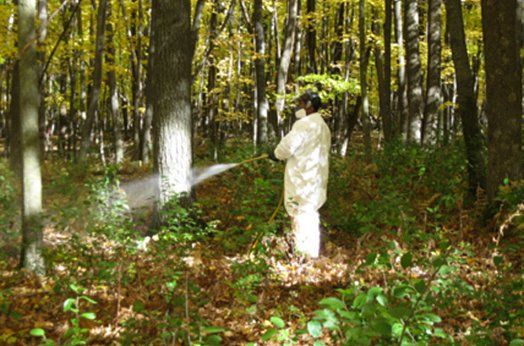Forest Management
Tree Planting and Preparation
Tree Planting
We can either mechanically or hand plant your tree seedlings.
- We machine and hand plant 50,000 yearly, “that’s a lot of experience.”
- Precision planting according to the management plan.
- Hand planters are available for those wet and challenging sites.
- Spring and fall planting.
- High survival rates.
Hand plant – we can hand plant seedlings in the woods to ensure adequate regeneration. We can plant sensitive, wet or rough ground. We can install tree shelters or tree mats.
Machine plant tree seedlings – we annually machine plant 100,000 seedlings on CRP, RIM, CREP, Riparian Buffers, and Wildlife plantings. We plant a large variety of tree and shrub species that are well suited for your soils, aspect, slope, and moisture conditions on your site.
Site Preparation
- Commercial pesticide applicators license for Minnesota, Iowa, and Wisconsin
- Herbicide spraying for band spraying for tree planting.
- Broadcast spraying for noxious weeds or general weed and grass control.
- Post-planting site maintenance.
Direct Seeding
If you want your tree planting to look more “natural,” direct seeding is an excellent alternative to seedling planting. We collect local tree and shrub seeds to plant on your site. The site is prepared to a soft bed of dirt, and the tree seed is broadcast spread with approximately 6,000 – 9,000 seeds per acre. This technique is suitable in areas with a concern for deer browse- we overwhelm the deer with thousands of stems per acre. Trees grow very fast with added competition from all of the stems.
Invasive Species Control
Invasive species may include buckthorn, thistle, crown vetch, garlic mustard, honeysuckle, and more. There are numerous ways to combat invasive species. A well-thought-out plan of control is needed to attack invasive species.
Foliar spray small invasive plants
- Broadcast spray the site when there are thousands of stems per acre.
- Foliar spray when stems are less than 4 feet tall.
- Spot spray with a handheld sprayer when there are scattered small stems.
Buckthorn Control
We provide multiple up-to-date control techniques for individual invasive species, like Buckthorn. They include: single stem treatment, foliar spot spraying, cut stump with herbicide treatment, broadcast spraying, mowing, and prescribed burning.

Timber Management and Sales
Timber Stand Improvement
- Chainsaw fell or girdled undesirable tree species in a woodlot to improve the productivity and quality of your woods.
- Eliminate unwanted tree species such as European buckthorn, boxelder, etc.
- Post-harvest clean-up to allow the next generation of trees to survive and prosper.
- Pruning crop trees to grow higher quality trees and maximize price in future timber value.
- Thinning trees promote rapid growth, reduce insect and disease issues, and encourage the health and longevity of your woods.
- Manage woods to encourage wildlife.
Timber Inventory
Forest inventory is the systematic collection of data and forest information for assessment or analysis. An estimate of timber’s value and possible uses is an essential part of the broader information required to sustain ecosystems. When taking forest inventory, the following are important factors to measure and note: species, diameter at breast height(DBH), height, site quality, age, and defects. From the data collected, one can calculate the number of trees per acre, the basal area, the volume of trees in an area, and the value of the timber. Inventories can be done for other reasons than just calculating the value. The statistical forest inventory aims to provide comprehensive information about the state and dynamics of forests for strategic and management planning.
Timber Sales/Logging
If you are interested in logging your woods, consulting a professional Forester is highly recommended.
- Receive full market value for your trees.
- Mark and measure trees to harvest according to landowner objectives and sound forest management practices.
- Selectively mark harvestable trees to maintain a sustainable forest.
- Supervise the sale from start to completion.
- Scale the timber.
- Draw up timber sale contracts.
- Assure the landowner that the best job has been implemented and the best possible price received for their trees.
Goals of Harvest
- High-quality wood production
- Enhance wildlife habitat
- Improve health and vigor of stand
- Revenue
Zumbro Valley Forestry, LLC
4120 Cty Rd 21 NE
Elgin, MN 55932

All Rights Reserved | Zumbro Valley Forestry, LLC
